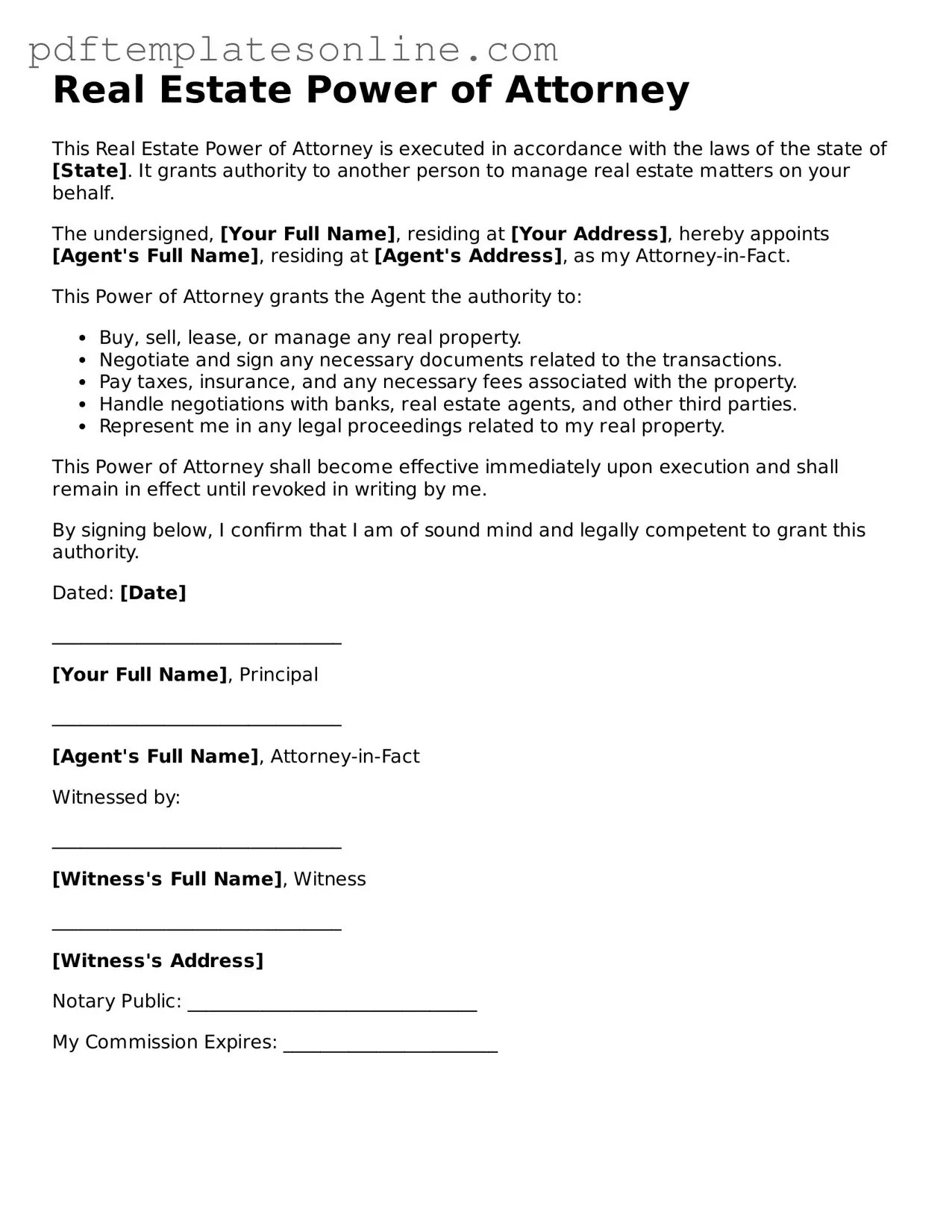Filling out a Real Estate Power of Attorney form can be a straightforward process, but many people make common mistakes that can lead to complications down the line. One frequent error is failing to specify the powers being granted. Without clear instructions, the agent may not have the authority to act as intended, leading to potential disputes or delays.
Another mistake involves not including the correct legal names of all parties. It’s essential to use full names as they appear on legal documents. Abbreviations or nicknames can create confusion and may invalidate the document. Similarly, omitting the date can also pose problems. A Power of Attorney should always be dated to establish when the authority begins.
Many individuals forget to check the state-specific requirements for a Power of Attorney. Each state has its own rules regarding the execution and notarization of these documents. Ignoring these regulations can render the form ineffective. Additionally, not having the form properly notarized or witnessed, when required, is a common oversight. This step is crucial in ensuring the document is legally binding.
Another mistake is failing to communicate with the agent about their responsibilities. It’s vital to discuss the scope of authority and ensure that the agent understands what is expected of them. Without this communication, misunderstandings may arise, leading to actions that do not align with the principal's wishes.
Some people neglect to keep a copy of the completed form. Having a copy is important for both the principal and the agent. It serves as a reference and can prevent disputes regarding the powers granted. Additionally, failing to revoke a previous Power of Attorney when creating a new one can lead to confusion. Always ensure that outdated documents are formally revoked to avoid conflicting authorities.
Another common error is overlooking the inclusion of specific limitations on the agent's powers. If there are particular actions that the principal does not want the agent to take, these should be explicitly stated in the document. Without such limitations, the agent may assume they have broader authority than intended.
People sometimes fill out the form in haste, leading to incomplete or incorrect information. Taking the time to review each section carefully is crucial. Missing signatures or initials can also invalidate the document, so double-checking for completeness is essential.
Finally, not considering the potential for future changes can be a significant oversight. Life circumstances can change, and it’s important to periodically review and update the Power of Attorney as needed. Failing to do so may result in a document that no longer reflects the principal's current wishes.
